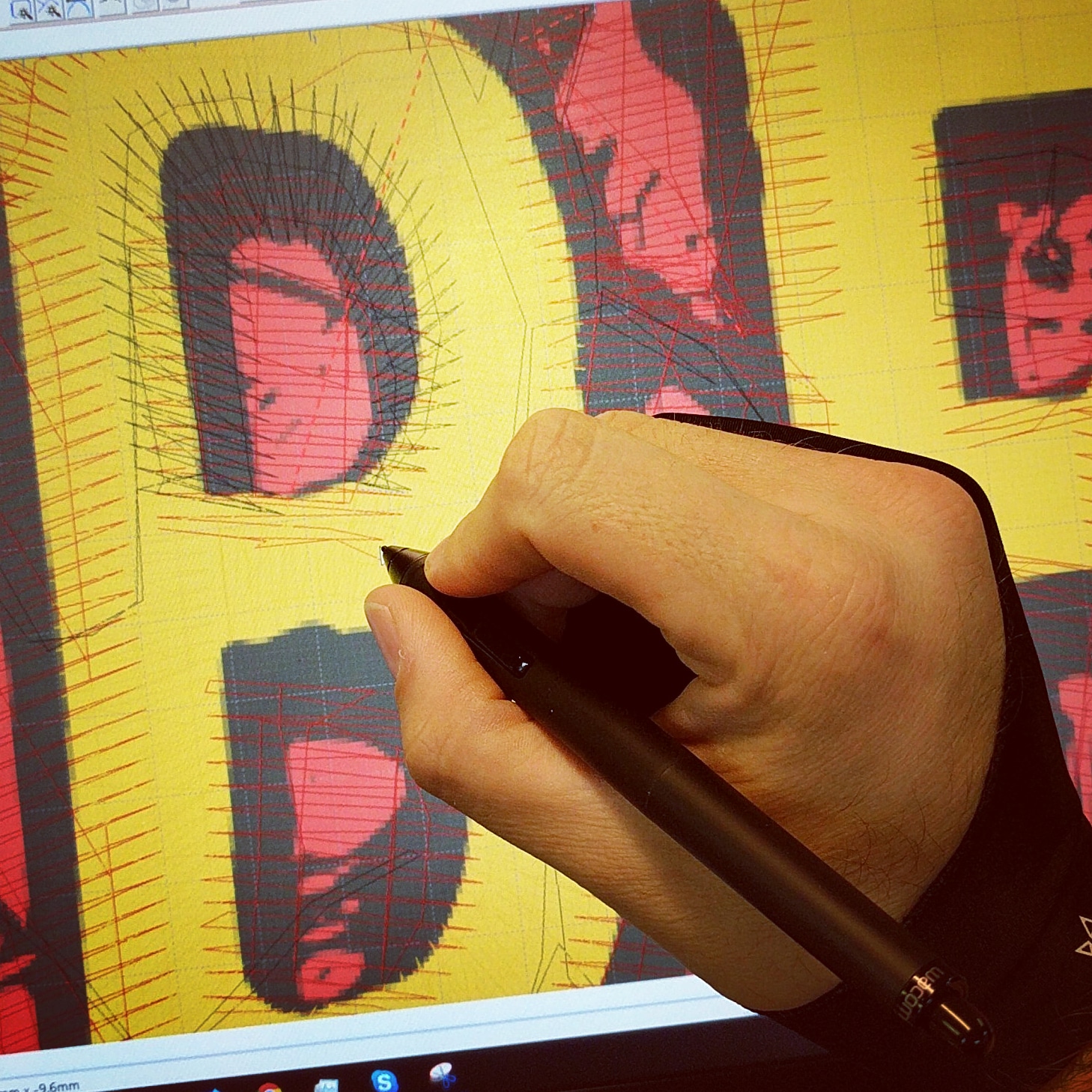Top-Rated Digitizing for Embroidery: Perfect Stitch Whenever
Top-Rated Digitizing for Embroidery: Perfect Stitch Whenever
Blog Article
Streamlining the Art of Embroidery Digitizing: Step-by-Step Overview
Embroidery digitizing is a careful craft that demands accuracy and creative thinking. As modern technology proceeds to advance, the digitization procedure has actually come to be extra easily accessible, permitting enthusiasts to bring their complex designs to life effortlessly. In this overview, we will certainly untangle the intricacies of embroidery digitizing, breaking down each action systematically to improve the process and encourage both novices and experienced embroiderers alike. Remain tuned to discover just how you can simplify this elaborate art kind and change your creative visions into beautifully embroidered masterpieces.
Comprehending Embroidery Digitizing Software Application
Embroidery digitizing software application offers as an essential device for transforming complex styles right into digital styles suitable with embroidery makers, facilitating exact stitching and modification. This specific software program enables individuals to import various picture data layouts, such as JPG or PNG, and convert them into embroidery machine-readable formats like DST, EXP, or PES - Digitizing for Embroidery. By using features like stitch modifying, rug alternatives, and thread color selection, digitizing software program enables users to manage every aspect of the style procedure
In addition, advanced needlework digitizing software provides tools for producing intricate layouts, adjusting stitch density, and integrating complex information. Users can also preview the design before stitching it out, guaranteeing accuracy and lessening mistakes. Additionally, many software programs offer automatic features that assist enhance the digitizing procedure, saving time and initiative.
Recognizing the capacities of embroidery digitizing software is necessary for accomplishing high-quality lead to needlework tasks. By mastering this device, embroidery enthusiasts and specialists can unleash their imagination and bring detailed layouts to life with accuracy and effectiveness.

Selecting the Right Design Documents
After familiarizing yourself with the abilities of embroidery digitizing software, the following essential action in the process is choosing the ideal design declare your project. Digitizing for Embroidery. When picking a layout declare needlework digitizing, it's necessary to take into consideration the intricacy of the style, the size of the final item, and the kind of fabric you will be dealing with
For detailed layouts with fine details, a high-resolution photo or vector data is recommended to guarantee that the needlework machine can accurately duplicate the design. Additionally, the size of the last item plays a substantial function in picking the ideal layout file. Larger styles might require greater resolution files to keep clearness and intensity.
Moreover, the kind of fabric you will certainly be embroidering on influences the choice of layout documents. Various fabrics may call for adjustments in the design file to guarantee that the stitches are correctly lined up and the design appears as intended. By thoroughly choosing the ideal design documents based upon these variables, you can set yourself up for a successful click now needlework digitizing procedure.
Digitizing Devices and Methods
Making use of specialized software application and accuracy methods, digitizing tools are necessary in changing intricate layouts into embroidery-ready files. Needlework digitizing software application, such as Wilcom, Hatch, or Embrilliance, gives the essential system to convert artwork right into stitch information. These programs offer features like stitch editing and enhancing, underlay choices, and text devices moved here to make sure the layout converts seamlessly onto material.
One of the essential methods in digitizing is producing a clear course for the needlework machine to adhere to. This involves digitizing each aspect of the style with precision, identifying stitch types, densities, and instructions. By making use of devices like digitizing tablets or software-specific plugins, embroiderers can achieve a high degree of precision in their digitized styles.
Moreover, grasping the art of rug stitching is vital for generating high quality embroidery. Underlay stitching maintains the textile and produces a foundation for the design, ensuring that the end product is both visually appealing and durable. By recognizing these digitizing tools and techniques, embroiderers can raise their craft and bring complex designs to life with accuracy and effectiveness.
Personalizing Stitch Types and Instructions
Having actually established a foundation in digitizing tools and techniques, an important element in advancing needlework craftsmanship hinges on tailoring stitch kinds and directions with website link precision and purpose. The selection of stitch kinds can considerably impact the total appearance and appearance of the embroidered layout. Satin stitches, known for their smooth and glossy surface, job well for producing boundaries and text. On the various other hand, fill stitches are suitable for covering larger locations successfully. By tactically incorporating these stitch types, embroiderers can attain depth and measurement in their designs.
Additionally, the instructions of stitches plays an important function in improving the aesthetic allure of the last needlework. By trying out with various stitch angles and patterns, embroiderers can bring their layouts to life with impressive information and details.
Screening and Refining Your Digitized Layout
To make sure the accuracy and high quality of your digitized layout, thorough testing and improvement are essential steps in the needlework digitizing process. Once you have actually finished the digitization of your style, it is important to check it prior to waging the actual needlework. Evaluating enables you to identify any possible concerns such as string breaks, stitch density troubles, or layout distortions that might influence the outcome.

After screening, it is very important to improve your digitized style based upon the comments from the test sew-out. This might include tweaking stitch settings, readjusting thickness, or making changes to the overall layout to attain the preferred outcome. By repeating via testing and refinement, you can tweak your digitized design to excellence before moving onward with the actual embroidery procedure.
Final Thought
Finally, understanding the art of embroidery digitizing needs an extensive understanding of the software, picking the best design data, utilizing digitizing devices and techniques, tailoring stitch types and directions, and screening and fine-tuning the digitized design. By adhering to these steps, embroiderers can streamline the digitizing process and produce top quality stitched designs with precision and performance.
Report this page